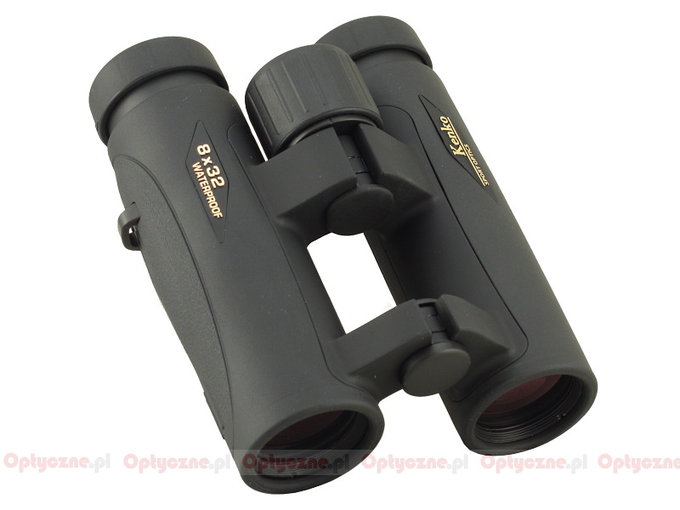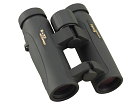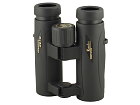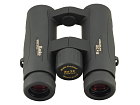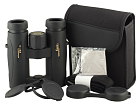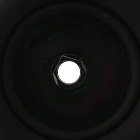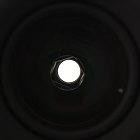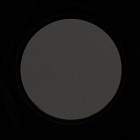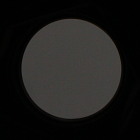Kenko Ultra View OP 8x32 DH
All the binoculars feature Schmidt-Pechan roof prisms made of BaK-4 glass. The producer assures us that all air-to-glass surfaces are covered by high quality antireflection coatings. The glass used in the tested instrument is allegedly eco-friendly i.e. without any arsenic or lead compounds.
The buyer gets caps for objective lenses and a joined rainguard for eyepieces, a case and a cleaning cloth. This pair of binoculars comes with a 10-year-long guarantee period given by the producer.
| Magnification | Lens diameter | Angular field of view | Prisms | Eye relief | Weight | Price |
|---|---|---|---|---|---|---|
| 8 | 32 | 140/1000(8o) | BaK-4/roof | 17.5 mm | 560 g | 539 PLN |
Summary
Pros:
- good build quality,
- chromatic aberration decently corrected,
- slight coma,
- very low inner glare,
- very good blackening inside the binoculars,
- good quality of prisms.
Cons:
- field of view distinctly narrower than that given in the specifications,
- image focus on the edge of the field decreases sharply,
- significant astigmatism.
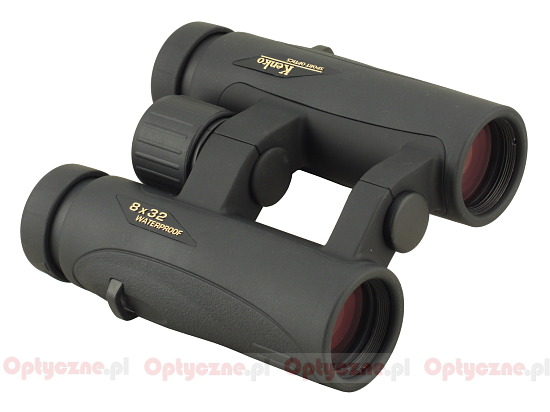 |
One glance at the outward appearance of the binoculars allows us to say immediately that we deal here with a twin brother of the Vixen New Forest HR 8X32 WP, tested by us not so long ago. What’s interesting, the Kenko is noticeably cheaper than the Vixen in Poland and comes with a longer guarantee period. Keeping in mind very good results of the New Forest model we might think that the Kenko will be even a better option. Unfortunately it is not the case because those two pairs of binoculars differ greatly from each other.
The transmission graph, shown below, is the basic difference.
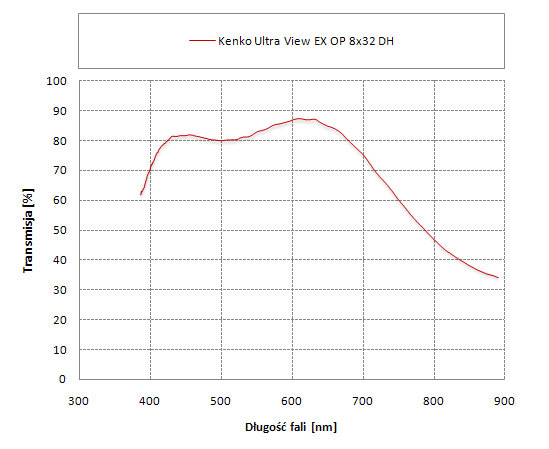 |
The Vixen was praised in this category because it featured the transmission of an instrument from a high-end price segment. Inside the Kenko much worse coatings were used so the results are significantly lower – I would say typical for this kind of the equipment. You can clearly understand why the Kenko is distinctly cheaper than the Vixen.
It is not the end of differences, though. The optical construction of both binoculars is perhaps the same as it indicates the field of view, in both models fraudulently narrowed down in the same way; the mechanical construction in the sense of the workmanship of inner parts of the tube is different. The Kenko fared better here because the inside of the binoculars is much better blackened and perhaps it also features additional apertures to limit inner glare. Although it loses more light on the coatings, the Kenko works better against bright light giving much nicer, you can say almost perfect image of exit pupils. The situation in the case of the Vixen was not very bad but significantly worse than here. You can see it clearly comparing the photos of the area near the exit pupils presented in the “Internal reflections” category.
The repetitiveness of the construction and the quality control is quite another question. The Kenko Ultra View OP 8x32 DH, which we tested, was a new device, straight from the carefully wrapped original box. Despite that fact we noticed a distinct decollimation of the binoculars and significant astigmatism. Without testing several other specimens of these binoculars it is difficult to say whether it was a quality control slip-up or the instrument was damaged during the transport.




